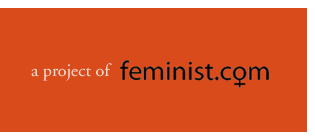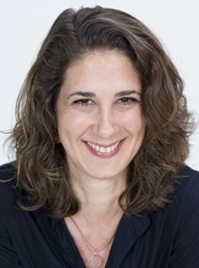 |
 |
Inner Actions Tragedy and Humanity
I grew up in New York City, an amazing place to grow up. It was where I learned to dip artichoke leaves in melted butter at age three, where I was moved to chills by theater and where I learned to ride the Second Avenue bus to acting school all by myself at age 10. It was also where I learned to live in a bubble, blocking out noise coming from the street and surrounding apartments, and where I learned to stare at the floor in the elevator to avoid unwanted chitchat with nosey adults. And where I learned to walk down the street barely noticing other people, seeing them merely as bodies in space, to be ignored or cautiously avoided.
Walking down the street in my own orbit of thought, with the automatic "danger assessment meter" constantly running underneath, became an isolating habit, a protective way to move through life. But that habitual mode of being collapsed for a spell, on Thursday, September 13, 2001, my first subway ride back to work after the devastating events of the Tuesday before.
I was not the only one waiting for the Q train, as I half-expected to be, going back to work that Thursday. People milled about on the platform and waited in silence for one of the few train lines that could get us from Brooklyn into Manhattan. The train took its time, but no one sucked their tongue in frustration. Most people like me, were in shock, jittery and a little scared to be back in our regular routine with the new knowledge that at any moment it could all be violently disrupted. Clear eyes met mine. We shared longer, knowing gazes when glancing up from the newspapers. A few openly shared new facts or inquired about missing people. For the first time in my experience we waited not alone, but together for the train.
On its way to Manhattan, the Q train emerges from its tunnel and rides over the Manhattan bridge, offering (depending on the weather) a stunning view of the lower Manhattan skyline. On clear days before Sept. 11, I always looked for Lady Liberty and then at the Twin Towers, looming so large over everything and casting shadows on the river.
As we burst out of the tunnel into the light of this clear day, everyone looked out the window. And there it was: a smokey pile, a huge void where the towers had been. There was complete silence as we rocked back and forth with the motion of the train. I felt my heart leap into my throat and tears stream down my cheeks, and I noticed others blinking back their tears. We looked at each other with compassion. New Yorkers. The most hardened people in the world. They had become real to me. We were sharing a sacred moment in the subway.
Recently, a different kind of devastation blew into my hood with Tropical Storm Irene. Houses and roads and trees and rivers were destroyed or sources of destruction. My power went out. At first I was jittery but numb, acting like my old New Yorker self, just going about my business, checking in to make sure close friends were OK and making sure to stock up on enough cell phone charge, candles and water. Then, after four days, when the irritation of being without power escalated, I woke up into the pain surrounding my neighborhood. I realized that being without power was one way I was connected to the devastation of towns near me, towns I often visit and drive through. I awoke into the humanity that disaster evokes, and did my best to serve.
It is not an original question, but why does it take tragedy to bring out the best in people? And then of course, why, when the crises point passes, do we so quickly go back to our sheltered selves and lives?
Sometimes, in our own lives, we unconsciously create a sense of calamity in order to access more of our humanity. We pick a fight, or lose a wallet. I recently heard of a little girl who was getting a reputation for being extremely clumsy, always spilling things and breaking valuables. It turns out that she unwittingly did this reactively every time her parents were experiencing tension, which had the result of shifting their antagonism from each other to her. In her infinite child wisdom, her crises got them working together, for a little while, at least.
In line with the Inner Actions column, I offer you these questions:
Are there qualities that tragic times bring out in you, that you would like to access more often?
Are there ways you try to unconsciously create mini-disasters to access a piece of humanity in yourself, or from others, that you are not able to access directly?
What impact does it have on your self-esteem? On the ones you love?
And, in honor of creating a shift, do something that you would only do after a disaster. Notice people around you more. Smile at strangers. Volunteer. Donate.
And remember, love yourself, no matter what.
Please, as always, feel free to contact me through my site at www.blairglaser.com/contact/ and let me know your thoughts!
Blair also worked from 1998 to 2004 as part of the core staff of Eve Ensler's V-Day, a movement to stop violence against women and girls, corresponding with women all over the world about issues of empowerment. Blair's articles have appeared online in UK's feminist e-zine, FLOW, at Sexual Health.com, and in the Hudson Valley Arts/ Spirit / Culture publication; Chronogram. You can visit Blair's web site at www.blairglaser.com. |
|||
Home | About Us | Features | Ask
Our Team | Inspiration
& Practice | Women of Vision | Resources
Copyright 2010 Feminist.com. All rights reserved.
